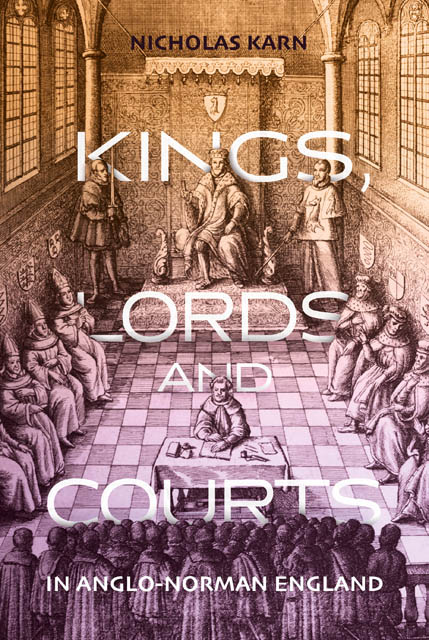Book contents
- Frontmatter
- Dedication
- Contents
- Preface and Acknowledgements
- List of Abbreviations
- Introduction
- 1 Lords and their Dependents in Court: The Later Anglo-Saxon Paradigm
- 2 The Aspirations of Lords in Eleventh- and Twelfth-Century England
- 3 Private Claims and Hundreds in the Later Eleventh and Earlier Twelfth Centuries
- 4 The Division of Hundreds and the Proliferation of Courts
- 5 From Debate within Courts to Debate between Courts: The Origins of Jurisdictional Debate
- 6 Courts, Pleas and Kings in the Early Twelfth Century
- 7 Pleas and Justices in the Early Twelfth Century
- Conclusion
- Appendix: The Evidence for Justices, 1100–54
- Bibliography
- Index
5 - From Debate within Courts to Debate between Courts: The Origins of Jurisdictional Debate
Published online by Cambridge University Press: 18 January 2023
- Frontmatter
- Dedication
- Contents
- Preface and Acknowledgements
- List of Abbreviations
- Introduction
- 1 Lords and their Dependents in Court: The Later Anglo-Saxon Paradigm
- 2 The Aspirations of Lords in Eleventh- and Twelfth-Century England
- 3 Private Claims and Hundreds in the Later Eleventh and Earlier Twelfth Centuries
- 4 The Division of Hundreds and the Proliferation of Courts
- 5 From Debate within Courts to Debate between Courts: The Origins of Jurisdictional Debate
- 6 Courts, Pleas and Kings in the Early Twelfth Century
- 7 Pleas and Justices in the Early Twelfth Century
- Conclusion
- Appendix: The Evidence for Justices, 1100–54
- Bibliography
- Index
Summary
In 1000, business was transacted overwhelmingly through the hundred court, and to some extent the shire court, which required the attendance of many people from across the districts they covered, and which were neutral ground in which the complicated patterns of later Anglo-Saxon multiple lordship could be defined and managed. There are some indications that hundreds might try to protect their territories from interventions from other hundreds, but otherwise there is little evidence for jurisdictional debate, that is, discussions that assumed that it was of great importance where a dispute was heard, or where participants assumed that someone could hear a case. It is hard to see how cases were allocated to one assembly or to another. Bocland was associated with kings, but they did not claim to hear cases arising about bocland exclusively, so that some were heard before kings but others in shires; there is no clear principle behind the choices made. More than one king stated that none should approach the king for justice unless he had been denied it in the hundred. There are clearly cases heard by kings before 1066, but those seem to have been few. The laws indicate that the hundred was the primary venue for hearing disputes, but the relationships between the various assemblies are far from clear.
Long before 1200, the role of the hundred had been considerably diminished. Lords formed units and courts below or within the hundred, which were termed halimota, and which meant that much business could now be transacted within the bounds of one lordship. This reduced the scope for others to interfere with the interests of the lords who held these halimota, and also allowed the holder of these courts to monopolise, or at least take much of, the dues and proceeds that arose from the meeting of the court. These changes were in the interests of lords, and were more or less driven by them; the preceding chapter set out evidence for how lords created these courts themselves. Perhaps the creation of these smaller units was in the interests of others too – those attending the court had shorter distances to travel – but the principal role in making these units lay with the lords behind their creation.
- Type
- Chapter
- Information
- Kings, Lords and Courts in Anglo-Norman England , pp. 127 - 151Publisher: Boydell & BrewerPrint publication year: 2020



